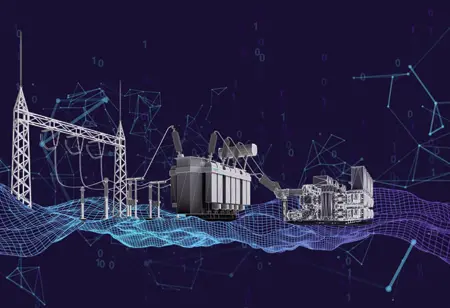Thank you for Subscribing to Electrical Business Review Weekly Brief
I agree We use cookies on this website to enhance your user experience. By clicking any link on this page you are giving your consent for us to set cookies. More info
Connecting Power and Progress: Wire and Cable Solutions in the Electrical Industry
Wire and cable solutions form the backbone of the electrical industry, enabling the efficient and reliable transmission of power and data.

By
Electrical Business Review | Sunday, June 04, 2023
Stay ahead of the industry with exclusive feature stories on the top companies, expert insights and the latest news delivered straight to your inbox. Subscribe today.
Wire and cable solutions are the lifelines of the electrical industry, ensuring efficient power and data transmission across various applications.
FREMONT, CA: Wire and cable solutions form the backbone of the electrical industry, enabling the efficient and reliable transmission of power and data. As technology advances and connectivity becomes increasingly crucial, the demand for innovative wire and cable solutions continues to grow. In this article, we study the significance of wire and cable solutions in the electrical industry, their diverse applications, advancements in materials and technologies, and the future of this critical sector.
1. Powering Connectivity: Wire and cable solutions are essential for electrical power transmission and distribution. They form the intricate network that connects power sources to electrical equipment, ensuring the reliable flow of electricity. Additionally, they facilitate communication by enabling data transmission for various applications, including telecommunications, networking, and industrial control systems. Without high-quality wire and cable solutions, the electrical industry would struggle to deliver power and maintain the connectivity required for modern technology-driven lifestyles.
2. Diverse Applications: Wire and cable solutions have various applications across industries. In the residential and commercial sectors, they power lighting systems, appliances, and electrical infrastructure. Robust cables and wiring are essential for machinery, control systems, and automation in industrial settings. The telecommunications industry relies heavily on fiber optic cables for high-speed data transmission. Renewable energy installations, like solar and wind farms, require specialized cables to connect power generation sources to the electrical grid. These diverse applications underscore the importance of reliable and efficient wire and cable solutions.
3. Advancements in Materials and Technologies: The wire and cable industry has witnessed significant advancements in materials and technologies, improving performance and reliability. Copper and aluminum remain the primary conductive materials, but innovations in insulation materials, such as polyethylene and cross-linked polyethylene (XLPE), have enhanced electrical properties and durability. Fiber optic cables have revolutionized data transmission with their high bandwidth and exemption to electromagnetic interference. Additionally, advancements in manufacturing techniques, including extrusion and insulation processes, have improved the quality and efficiency of wire and cable production.
4. Addressing Safety and Sustainability: Safety and sustainability are key wire and cable industry considerations. Flame-retardant cables help prevent the spread of fires, protecting people and property. Low-smoke, zero-halogen (LSZH) cables minimize the emission of toxic fumes in the case of a fire, enhancing safety in enclosed spaces. Regarding sustainability, manufacturers are developing environmentally friendly cables with reduced carbon footprints and improved recyclability. The industry is also embracing the circular economy concept by incorporating recycled materials in cable production and implementing responsible disposal practices.
5. The Future of Wire and Cable Solutions: Wire and cable solutions look promising, driven by technological advancements and evolving industry needs. With the growing adoption of renewable energy sources and electric vehicles, the demand for specialized cables to support these sectors will continue to grow. Growing the Internet of Things (IoT) and 5G networks will require high-speed, low-latency communication cables to accommodate the data-intensive landscape. Furthermore, the push for energy efficiency will lead to the development of cables with reduced power losses and improved transmission capabilities.
Conclusion: Wire and cable solutions are the lifelines of the electrical industry, ensuring efficient power and data transmission across various applications. The continuous advancements in materials, technologies, and sustainability practices contribute to enhanced performance, safety, and reliability. As the electrical industry evolves, wire and cable solutions will play an integral role in supporting emerging technologies, renewable energy systems, and the growing demand for connectivity. By embracing innovation and prioritizing safety and sustainability, the wire and cable industry will continue powering connectivity and driving progress in the electrical industry.








